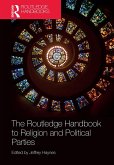Sikhism is the fifth largest religion in the world. It is a young religion, having been founded in 1469. It has been in the United States for almost 150 years, but is still relatively unknown. Perhaps you have seen someone wearing a turban in public or seen Sikhs mentioned in the news and wondered who they were. Maybe your neighbor, coworker or friend is Sikh, and you want to learn more without making them feel offended or annoyed. Many people have questions about Sikhs: What are the key beliefs of the Sikh religion? Do they worship in a Sikh temple? Why do Sikhs have long hair? You may wonder who is the Sikhism founder, how to pronounce Sikh, how Sikhism differs from other religions or what to call a Sikh turban. This guide answers all these questions and many more to help you learn about this optimistic and service-oriented faith. The questions in this guide were created by interviewing Sikhs and asking them what they wish people knew about Sikhs and their religion. Whether you know a Sikh personally or just want to learn about this young and growing religion, "100 Questions and Answers About Sikh Americans" includes information ranging from Sikh history, Sikh beliefs and values, Sikh persecution, Sikh articles of faith, Sikh worship and Sikh demographics. It represents varying Sikh perspectives, not just those of one region, division or age. Encouraged by the Sikh American Legal Defense and Education Fund and the Sikh coalition, this book is an education tool, complete with questions for discussion and reflection at the end, perfect for a school class or an interfaith learning community. It informs readers about gurdwaras, or the Sikh house of worship, and the 11 gurus. It includes answers about the three core tenets of Sikhism, the role of women in Sikhism and Sikh volunteerism and service. If you would like to learn more about Sikhism, whether to feel more prepared to interact with Sikhs or to familiarize yourself with a new religious perspective, this guide is for you.








